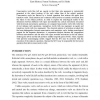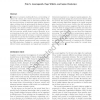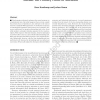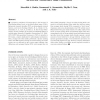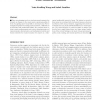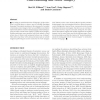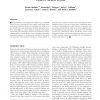JOCN
2010
13 years 6 months ago
2010
JOCN
2010
13 years 6 months ago
2010
Studies in semantics traditionally focus on knowledge of objects. By contrast, less is known about how objects relate to each other. In an fMRI study, we tested the hypothesis tha...
JOCN
2010
13 years 6 months ago
2010
Visual attention selectively enhances the neural response to a task-relevant item. But what happens when an item outside the primary focus of attention is also relevant to the tas...
JOCN
2010
13 years 6 months ago
2010
Human behavioral studies demonstrate that healthy aging is often accompanied by increases in memory distortions or errors. Here we used event-related fMRI to examine the neural ba...
JOCN
2010
13 years 6 months ago
2010
JOCN
2010
13 years 6 months ago
2010
There is growing evidence suggesting that synchronization changes in the oscillatory neuronal dynamics in the EEG or MEG reflect the transient coupling and uncoupling of functiona...
JOCN
2010
13 years 6 months ago
2010
Prior neuroimaging work on visual perceptual expertise has focused on changes in the visual system, ignoring possible effects of acquiring expert visual skills in nonvisual areas....
JOCN
2010
13 years 6 months ago
2010
According to embodied theories of language, people understand a verb like throw, at least in part, by mentally simulating throwing. This implicit simulation is often assumed to be...
JOCN
2010
13 years 6 months ago
2010
When exposed to novel dynamical conditions (e.g., externally imposed forces), neurologically intact subjects easily adjust motor commands on the basis of their own reaching errors...
JOCN
2010
13 years 6 months ago
2010
Written texts are not just words but complex multidimensional stimuli, including aspects such as case, font, and handwriting style, for example. Neuropsychological reports suggest...
